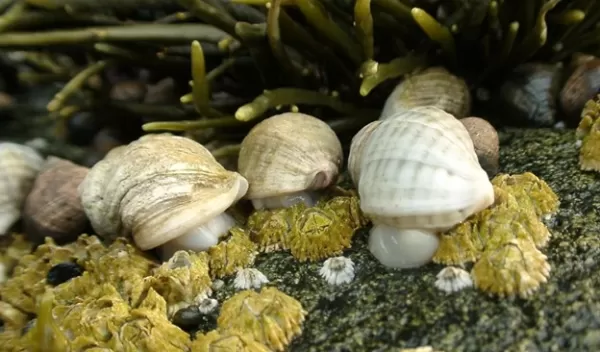
Declines in shellfish species on rocky seashores match climate-driven changes
The waters of the Gulf of Maine are warming faster than oceans almost anywhere on Earth. As the level of carbon dioxide rises in the atmosphere, it's absorbed by the sea, causing pH levels to fall. Ocean acidification makes it difficult for shellfish to thicken their shells --their primary defense against predators.
In a U.S. National Science Foundation-funded study published in Communications Biology, researchers Peter Petraitis of the University of Pennsylvania and Steve Dudgeon of California State University, Northridge, show that the changing climate is taking a toll on Maine's sea life.
Data collected over two decades, including numbers of five species of mussels, barnacles and snails, show that all have been experiencing declines -- some slow, some more rapid -- in part due to climate change.
"These species are often overlooked because of how common they are," Petraitis says. "They're just everywhere across the rocky shores. If they decline by about 3% a year that's a relatively small change, so you might not notice it for a while. But one year, people are going to suddenly look around and say, 'Where are all the snails, mussels and barnacles?'"
These species "form the core of an iconic food web" in the Gulf of Maine, says Dudgeon. "Concurrent declines of five species, including both native and nonnative, are proportionally large, and may cause profound changes in the ecology of coastal oceans in the region."
In 1997, Petraitis and Dudgeon set up a long-term experiment on the Gulf of Maine's Swan's Island to study the ecological principles of multiple stable states.
Using abundance data from 1997 to 2018, the researchers found that very young mussels were in the sharpest freefall, declining almost 16% a year, while other species were dwindling by 3 to 5% each year. Over that time period, limpets, periwinkles and dogwhelks declined by 50%, contractions the researchers describe as "sobering."
To get at the question of why, the ecologists looked to data on ocean temperature and chemistry. They found that the downward trajectory of mussels and common periwinkles matched up with increasing summer ocean temperatures collected from a nearby buoy.
"This team's ability to document small annual changes, which add up to big changes over the course of two decades, underscores the importance of long-term research in the environmental sciences," says Betsy von Holle, a program director in NSF's Division of Environmental Biology.


